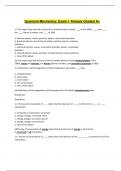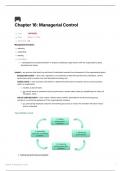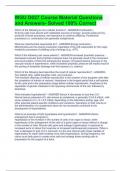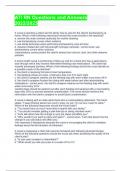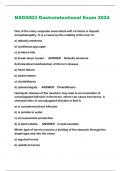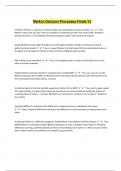Exam (elaborations)
Quantum Mechanics: Exam 1 Already Graded A+
- Course
- Institution
Quantum Mechanics: Exam 1 Already Graded A+ 1.1 The major steps that led to the birth of modern physics include ____ of the 1890s, ____ and ____, the ____ theory of matter, and ____ of 1895. a. classical physics; waves; particles; atomic; unresolved questions b. quantum physics; uncertainty...
[Show more]
